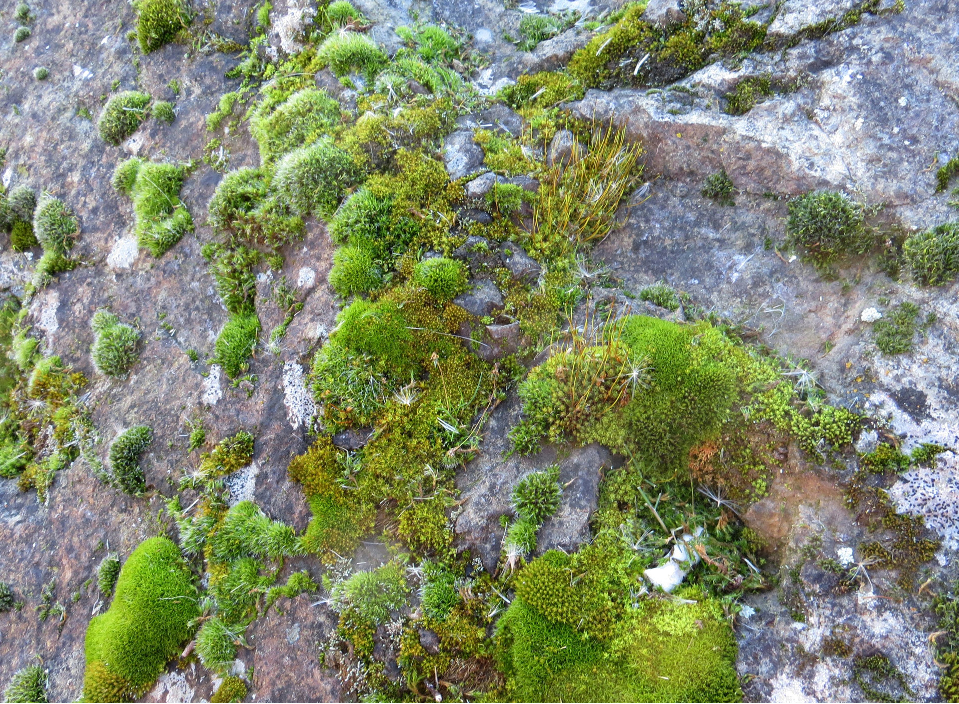Calculus
Chapters
Sums and Differences of Derivatives
Sums and Differences of Derivatives
Introduction
Calculus is all about rates of change. To find a rate of change, we need to calculate a derivative. In this article, we're going to find out how to calculate derivatives for sums and differences of functions.
Let's start by thinking about a useful real world problem that you probably won't find in your maths textbook.
 For the last few weeks, Sid the sloth has noticed that the
moss is expanding to cover a nearby rock more quickly than he can crawl over it. In \(t\) days, Sid crawls \(t^2 + 2t\) centimetres along the rock. If the
moss grows \(2e^t\) centimetres in \(t\) days, at what rate is the difference between Sid's rock coverage and the moss's rock coverage increasing at the
end of the 10th day?
For the last few weeks, Sid the sloth has noticed that the
moss is expanding to cover a nearby rock more quickly than he can crawl over it. In \(t\) days, Sid crawls \(t^2 + 2t\) centimetres along the rock. If the
moss grows \(2e^t\) centimetres in \(t\) days, at what rate is the difference between Sid's rock coverage and the moss's rock coverage increasing at the
end of the 10th day?
This problem involves the rate of change of the difference between the moss's rock coverage and Sid's rock coverage. The difference between the moss's rock
coverage and Sid's rock coverage at the end of \(t\) days is given by the formula:
Sounds easy enough, but how do we find the derivative of \(\text{difference}(t)\)?
The Sum and Difference Rules
Sid's function \(\text{difference}(t) = 2e^t - t^2 - 2t\) involves a difference of functions of \(t\). There are differentiation laws that allow us to calculate
the derivatives of sums and differences of functions.
Strangely enough, they're called the Sum Rule and the Difference Rule.
So what do the product and difference rules say?
The derivative of \(f(x) + g(x)\) is \(f'(x) + g'(x).\)
The derivative of \(f(x) - g(x)\) is \(f'(x) - g'(x).\)
There are two common ways to write the derivative of a function
- If the function is \(f(x)\), then we can write its derivative as \(f'(x)\) using a little ' after the \(f\). We pronounce \(f'(x)\) as "f-dash of \(x\)" or "f-prime of \(x\)"
- If \(y\) is the function of \(x\), then we can also write its derivative as \(\dfrac{dy}{dx}\) and call it "dee-y dee-x".
Now let's differentiate a few functions using the sum and difference rules.
Example
If \(y = 5x^7 + 7x^8\), what is \( \dfrac{dy}{dx}\)?
We'll use the sum, power and constant multiplication rules to find the answer. If you don't remember one of these, have a look at the articles on derivative rules and the power rule.
We set \(f(x) = 5x^7\) and \(g(x) = 7x^8\). Then \(f'(x) = 5(7x^6) = 35x^6\), and \(g'(x) = 7(8x^7) = 56x^7\) by the power and constant multiplication rules. So,
That wasn't too bad, was it? Let's try another one.
Example
Find the derivative of \( y = 5x^4 - 3x^3\).
We'll use the difference, power and constant multiplication rules to find the answer. If you don't remember one of these, have a look at the articles on derivative rules and the power rule.
We set \(f(x) = 5x^4\) and \(g(x) = 3x^3\). Then \(f'(x) = 5(4x^3) = 20x^3\), and \(g'(x) = 3(3x^2) = 9x^2\) by the power and constant multiplication rules. So,
Time for another one? We'll get a bit more inventive with our functions this time. Check out the article on the rules of differentiation if you don't remember how to find some of the derivatives involved.
Example
Find the derivative of \(y = \tan (x) - \ln (x) \).
We set \(f(x) = \tan(x)\) and \(g(x) = \ln(x)\). Then \(f'(x) = \sec^2(x)\), and \(g'(x) = \dfrac{1}{x}\) (check these in the rules of derivatives article if you don't remember them). Now use the difference rule to find:
One last example, and then it's time to deal with Sid's overtaking moss problem. You can, of course, repeatedly apply the sum and difference rules to deal with lengthier sums and differences.
Example
Find the derivative of \(y = x^2 + 4x + \cos (x) - \ln (x) - \tan(x)\).
Now \(\dfrac{d}{dx}(x^2) = 2x\) and \(\dfrac{d}{dx}(4x) = 4\) by the power and constant multiplication rules. The rules of derivatives also tell us that \(\dfrac{d}{dx}(\cos(x)) = -\sin(x)\), \( \dfrac{d}{dx}(\ln (x)) = \dfrac{1}{x}\), and \(\dfrac{d}{dx}(\tan(x)) = \sec^2(x)\). (check these in the rules of derivatives article if you don't remember them). Now use the sum and difference rules together to find
Solving Sid's Mossy Problem

Now we know enough to solve Sid's problem. How quickly is the distance between him and the border of the moss increasing? Sid's function is:
and he wants to know how quickly the difference between his rock coverage and the moss's rock coverage is increasing after 10 days. We need to find the derivative of \(\text{difference}(t)\) using the difference rule.
Now, using the power rule and constant multiplication rules and the fact that \(\dfrac{d}{dt}(e^t) = e^t\) gives
At \(t = 10\):
which is just a little unrealistic (that's a pretty big rock, and very rapidly growing moss), but Sid does work very slowly.
Description
Calculus is the branch of mathematics that deals with the finding and properties of derivatives and integrals of functions, by methods originally based on the summation of infinitesimal differences. The two main types are differential calculus and integral calculus.
Environment
It is considered a good practice to take notes and revise what you learnt and practice it.
Audience
Grade 9+ Students
Learning Objectives
Familiarize yourself with Calculus topics such as Limits, Functions, Differentiability etc
Author: Subject Coach
Added on: 23rd Nov 2017
You must be logged in as Student to ask a Question.
None just yet!